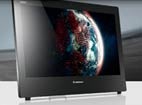On the heels of an agreement to acquire the x86 server business of IBM, Lenovo is continuing to increase its presence in the commodity portion of the x86 server market.
Lenovo has extended its x86 server lineup with a 1uThinkServer RD340 two-processor rack server, a 2u ThinkServer RD440 two-processor rack server, and a two-processor ThinkServer TD340 tower server. In addition, Lenovo announced the ThinkServer SA120, a modular and scalable rack-mount, direct-attached storage (DAS) enclosure.
While Dell and HP have been slugging it out for dominance of the x86 server market, Lenovo has steadily been gaining share at their expense. Buoyed by its full range of mobile and desktop PCs and an expected entrance into the smartphone space in the U.S. via a deal to acquire the assets of Motorola Mobility from Google, Lenovo, prior to its deal with IBM, had been squarely focused on the lower end of the x86 market where customers tend to often buy servers at the same time that they buy mobile devices and desktop PCs.
Jeffrey Jones, director of worldwide product marketing for Lenovo, says the latest Lenovo servers make use of Intel Xeon E5-2400 v2 series processors with up to 10 cores each to provide a 25 percent faster performance than previous generations of Lenovo servers.
Both rack servers support up to 192GB of memory, while the ThinkServer RD440 provides 48TB of internal storage, which doubles the capacity of the previous Lenovo servers.
While Lenovo clearly has higher-end x86 ambitions, it has had an almost singular focus on 1u and 2u systems that has enabled the company to become a credible contender in a space where manufacturing muscle and customer support are fundamental requirements.
Of course, while the number of servers shipped these days is a barometer of the health of the industry, the fact is that thanks to virtualization, customers are now running more workloads per x86 server than ever. At the same time, a significant percentage of those workloads are now running inside cloud services that are optimized to maximize the number of workloads per server. The end result is a somewhat distorted view of the overall server market, which makes it difficult to make valid comparisons.
Nevertheless, it’s pretty clear that the lion’s share of the x86 server market remains in the one- to two-processor category where customers like to be able to easily scale-out servers, which is a segment of the market where Lenovo is increasingly showing that it is a significant force to be reckoned with.



